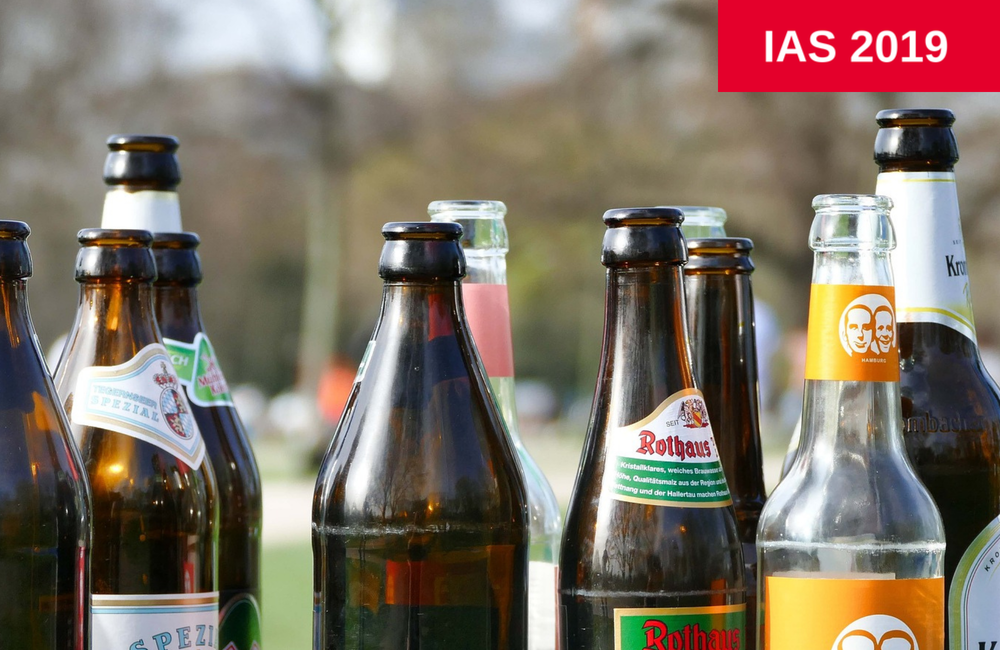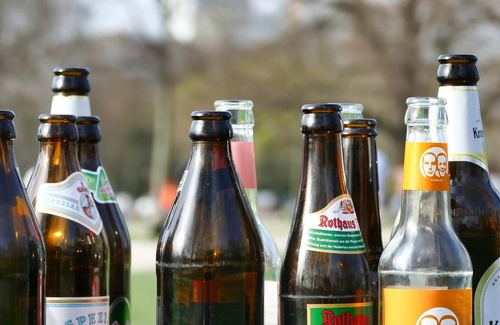
While it is well-established that alcohol and drug use lead to poorer outcomes for those living with HIV in settings such as Europe and North America, there is a scarcity of data for people living with HIV in sub-Saharan Africa. Two studies presented at the 10th International AIDS Society Science Conference on HIV Science (IAS 2019) in Mexico City yesterday showed poorer engagement with HIV care for those drinking or using drugs.
Kenya and Uganda
Dr Sarah Puryear from the University of California, San Francisco and colleagues aimed to find out how alcohol use affects the HIV care cascade from diagnosis to treatment to viral suppression, using baseline data from SEARCH, a cluster-randomised HIV ‘test-and-treat’ trial in 32 rural Kenyan and Ugandan communities.
Between April 2013 and June 2014, SEARCH undertook a door-to-door census followed by community-wide HIV testing in rural Uganda and Kenya. Individuals were also asked about alcohol use, with questions on frequency, intensity and heavy episodic drinking. Of all participants, 10,268 tested HIV-positive. Alcohol screening was conducted in almost all, resulting in a study population of 10,067. Most participants were aged between 25 and 44, 64% were female and most had less than primary school education.
Of the study population, 16% were alcohol drinkers and 84% were not. Baseline characteristics were similar between drinkers and non-drinkers, with the exception of sex: 71% of drinkers were male, while only 29% of non-drinkers were male.
Drinking levels were classified as low (48% of drinkers), medium (34%), high (11%) or very high (7%).
For any level of drinking, drinkers were 12% less likely to know their HIV status than non-drinkers. Only 59% of drinkers had been diagnosed prior to the study versus 68% of non-drinkers. This trend became more pronounced at higher levels of drinking.
For those who were already diagnosed, drinkers were less likely to be on antiretroviral therapy (ART), with 77% of drinkers on ART versus 84% of non-drinkers. Among those on ART, there was no association between any alcohol use and viral suppression, however high- and very high-level use were associated with 12 and 13% lower likelihoods of viral suppression.
Comparing all HIV-positive drinkers and non-drinkers, any level of alcohol use was associated with a 20% lower likelihood of being virally suppressed. Here, the combined effects of drinking on not knowing one’s status and not being on ART were reflected. This association was seen at every level of drinking and a trend towards decreased viral suppression became more pronounced at higher levels of drinking.
South Africa
Analysis by Dr Adrienne Shapiro at the University of Washington of a South African sample revealed similar findings, with data on drug use too.
Data came from a prospective cohort study of 2374 people with HIV attending an urban HIV clinic in a township in Durban, South Africa. Alcohol and drug use in the past month were self-reported at enrolment and participants were prospectively followed for a year. Factors such as age, sex, depression and socioeconomic status were controlled for.
Women made up 58% of the sample, while the median age of all participants was 31. Most were unemployed (57%) and 45% had a high school diploma or higher.
At baseline, 50% of men and 21% of women reported recent alcohol use; 11% of men and 1% of women had smoked marijuana; and 2% of men and 1% of women reported other drug use.
Overall, 1925 (81%) participants initiated ART, 1851 (78%) were retained in HIV care at 12 months, and 1272 (55%) achieved viral suppression.
Those who drank alcohol had a 30% reduced chance of remaining in care at twelve months (aOR 0.70 95% CI: 0.55-0.89). Additionally, loss to follow-up or death was more common in the group who drank alcohol.
Those who used drugs other than marijuana had a 78% lower odds of being virally supressed (aOR 0.32, 95% CI: 0.11-0.92). Use of marijuana was not associated with poorer viral suppression.
Conclusion
Both of these studies attend to the lack of data regarding the effects of alcohol and substance use on HIV outcomes in sub-Saharan Africa and illustrate the negative impact for those living with HIV in these low-resource settings.
It is evident from the SEARCH trial that heavier drinking leads to worse outcomes for those living with HIV but, importantly, any level of drinking resulted in adverse outcomes. While only a small percentage of participants in the South African study used drugs other than marijuana, the effects on viral load suppression were significant. Both researchers emphasised the need for comprehensive interventions that take alcohol and drug use into account for people living with HIV in sub-Saharan Africa in efforts to achieve the 90-90-90 targets in these countries.
Puryear SB et al. Increased levels of alcohol use are associated with worse HIV care cascade outcomes among adults in Kenya and Uganda. 10th International AIDS Society Conference on HIV Science (IAS 2019), Mexico City, session MOPDB0101, 2019.
View the abstract on the conference website.
Update: Following the conference presentation, this research was published in a peer-reviewed journal:
Puryear SB et al. Associations between alcohol use and HIV care cascade outcomes among adults undergoing population-based HIV testing in East Africa. AIDS, online ahead of print, March 2019.
doi: 10.1097/QAD.0000000000002427
Shapiro AE et al. Prevalence of recent alcohol and substance use in persons with HIV and associations with HIV care cascade outcomes in South Africa. 10th International AIDS Society Conference on HIV Science (IAS 2019), Mexico City, session MOPDB0105, 2019.

